What is the best way to clean the sink?
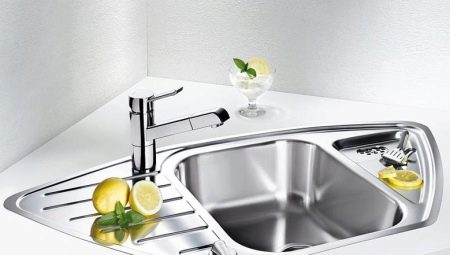
Long gone are the days when they washed dishes in a basin, and washed themselves in it. There is a sink in every home, now it has not only its functional purpose, but is also a full-fledged element of the interior. If your bathroom doesn't have a sink, then the kitchen has one.
No matter how you care for and clean your sink, sooner or later stains and limescale appear on it, which are not so easy to get rid of. But this is not a big deal, for each sink there are several unique methods that can give it a pristine and fresh look.
With the help of the usual household products, which are always at hand, absolutely any kitchen sink can be washed at home.
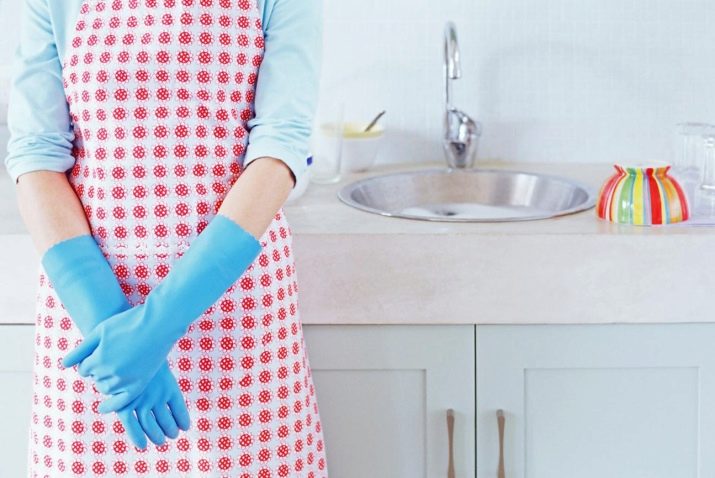
Cleaning features
Thanks to the rich assortment of materials, sinks are:
- Made of stainless steel.
- From porcelain stoneware.
- From sanitary ware.
- Enameled.
- Made of artificial stone.
Therefore, each of these materials has its own approach to cleaning and its own materials. Find out what your sink is made of and find the right products for it. So it will shine with purity again and will serve you faithfully.
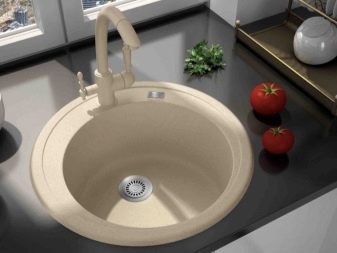
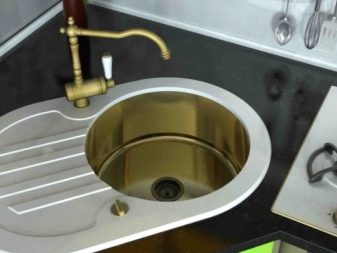
First you need to prepare:
- Remove all items and utensils from the sink and clear the area around.
- Wash the sink with a regular dish detergent.
- Prepare some special household gloves for yourself.
- Remove metal sponges and scouring pads.
- Get ready to ventilate the room.

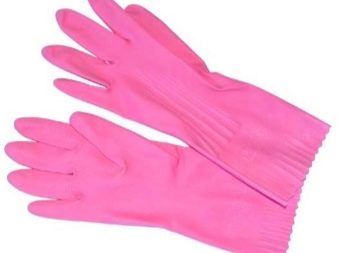
How do I wipe my sink?
Stainless steel
Stainless steel is an excellent material for making kitchen sinks. It is beautiful, comfortable and durable.Its advantage is the chrome-plated surface, which is resistant to limescale, grease and other dirt. But this is not a reason not to look after her and let everything take its course. Sooner or later, a stainless steel product will take on a very unkempt look. What to do?
Removing tarnishing is pretty easy with:
- soda;
- vinegar;
- bleach;
- starch.
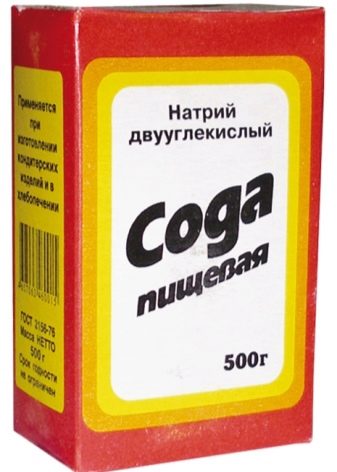
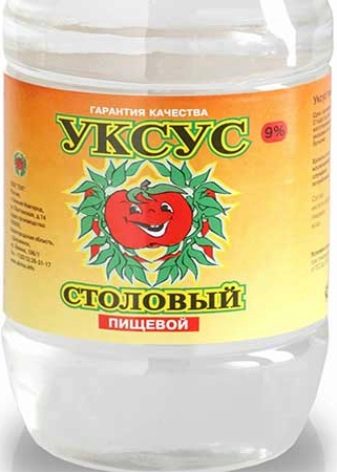
All these tools can be used both separately from each other and together:
- Regular chlorine-based bleach does an excellent job of removing stains and discoloration on the stainless steel surface, but it can lighten some areas of the sink unevenly, so it is recommended to evenly treat the entire surface of the sink with vinegar, leave for 20 minutes and rinse thoroughly.
- Baking soda also works well for blemishes and blemishes. It must be applied to the abrasive side of a dish sponge, add water to make a gruel and rub the surface thoroughly. It is a laborious process, but quite effective. The most important thing is to rinse the sink thoroughly after all the manipulations. An old toothbrush can help clean up dirt in hard-to-reach places.

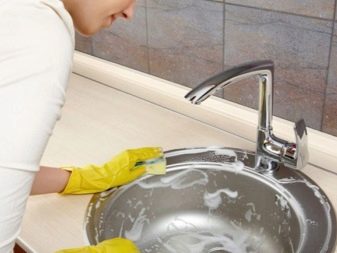
- In addition, a steam generator can become an alternative cleaning method, for this you need to set it to maximum power and steam all contaminated areas.
The powerful steam generator can handle all dirt without the need for cleaning agents.
From enamel and sanitary ware
The enamelled surface is very capricious and does not tolerate abrasive sponges and detergents, as they leave the smallest scratches in which dirt accumulates daily. The same goes for earthenware sinks. These types of sinks very often have an ugly yellowish coating that spoils the entire appearance. When cleaning ceramic sinks, it is best to use a mild, non-abrasive detergent:
- The easiest way is to use a regular dishwashing sponge and laundry soap. It is necessary to rinse the sink with warm water, lather the sponge with soap and carefully wipe the entire surface of the sink in a circular motion. Then rinse it with clean water.
- The usual household cleaning method is also good with the help of commercially available pastes and creams for earthenware and enamel, which do not leave scratches on the surface.
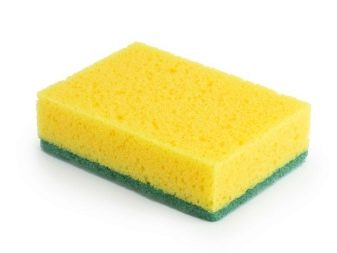
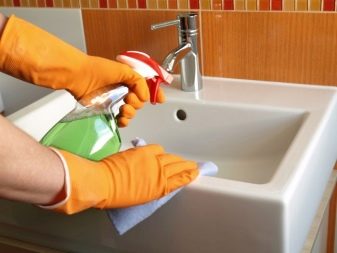
- There is a good homemade recipe for cleansing yellowness. It is necessary to prepare a solution of peroxide and ammonia. To do this, we take ammonia - 100 ml and 50 ml of 3% hydrogen peroxide, mix gently and apply to dirt. Leave for 10-15 minutes for exposure and rinse thoroughly.
- Another equally good way. For this we need wine vinegar and table salt. We take 100 ml of wine vinegar, put 2 tablespoons of salt in it and heat in a water bath or in a microwave oven to a temperature of about 60 degrees. We apply this mixture to dirt and leave it for 15-20 minutes. Then rinse thoroughly and wipe dry.
- Another way is to use bleach. Plug the drain, fill the sink with hot water, and add at least 1 cup of chlorine bleach. Hold for 20 minutes. Then carefully open the plug and drain the contents, then rinse everything thoroughly.
- With the help of lemon. A faience sink can be easily cleaned of stains with a slice of lemon. They need to rub the dirt and then rinse with water.
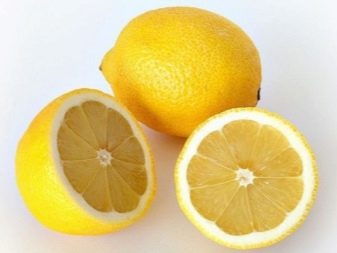
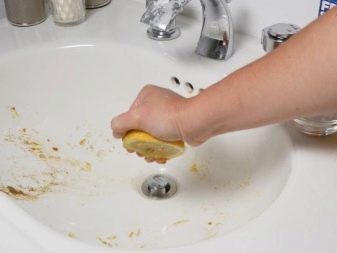
It is important to remember that for cleaning enamel sinks, it is unacceptable to use agents for cleaning toilets, acid and alkaline compounds that may be suitable for faience sinks.
From porcelain stoneware
Porcelain stoneware is a high quality and durable material, it is resistant to acid compositions, temperature extremes, as well as mechanical stress. But, despite the excellent functional performance, this material has not only positive reviews. Water stains and a whitish coating often appear on its surface. Porcelain stoneware does not tolerate aggressive detergents, therefore it is better to use either special store mixes, or folk methods:
- The most common method for any sink is a combination of vinegar and baking soda, which is also suitable for porcelain stoneware sinks. To do this, you need to apply soda to the entire surface of the sink, and slowly add vinegar to especially dirty places. As the vinegar and baking soda reacts, your sink gets clean. When the hissing stops, take a soft sponge and carefully wipe the entire surface with the resulting gruel, then rinse with water.
- The second method is citric acid and detergent. Take your regular dishwashing detergent and add citric acid to it, apply this mixture to a sponge and use gentle circular motions to sweep over the stains and dirt. Then also rinse everything with clean water.
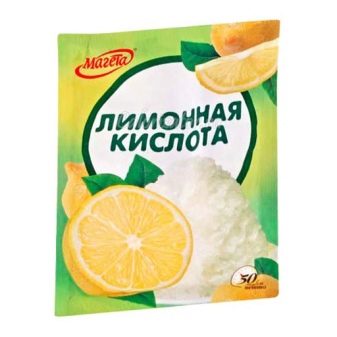
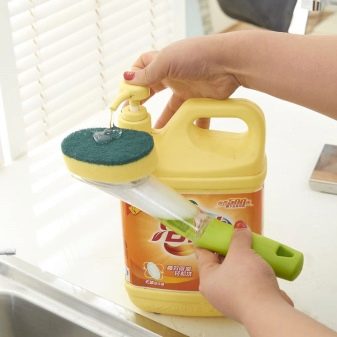
- If none of the previous methods worked for you, you can go to extremes. Many housewives use regular bleach. You just need to take into account that its contact with the sink surface should not be too long. After rinsing the sink with bleach, you need to quickly wipe it with a sponge, check how the stains were removed and immediately rinse with plenty of clean water. After each use, wipe the ceramic sink dry to avoid stains.
For how easy and simple to clean a porcelain stoneware sink, see the next video.
Artificial stone or composite
Composite sanitary ware is becoming more and more popular. This material is beautiful, has many colors to suit any interior, and is so highly durable that some manufacturers give an almost lifetime warranty. More and more shells are made from this material, but not everything is as simple as it seems. On dark-colored products, a whitish bloom from water quickly appears and, on the contrary, on light-colored products, traces of tea, coffee and bright products, as well as rust, remain if the tap leaks slightly. So how do you get rid of this unpleasant yellowness?
First you need to take into account that a stone sink cannot be washed with products containing:
- acetone;
- acid and alkali;
- solvents.
And also you can not use metal scouring pads, sponges and brushes, abrasive pastes and powders.
In addition, this material does not tolerate boiling water. You cannot pour boiling water into such a sink or try to wash it with it.
A sink made of light artificial stone can be well cleaned with chlorine-containing household products such as Domestosa. In addition, the popular melamine sponges work well and do a great job of removing any kind of stain from surfaces.
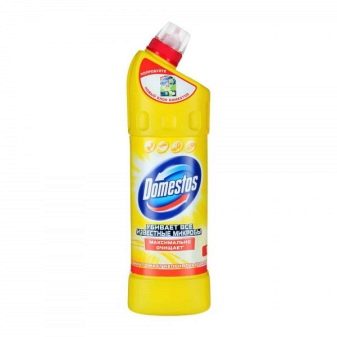
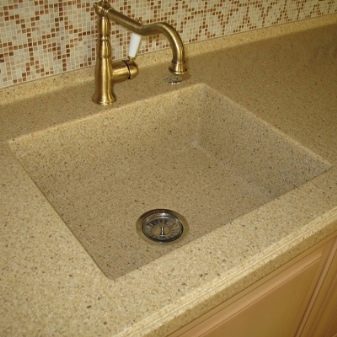
Consider folk methods:
- To clean with chlorine, you will have to close the drain with a plug and fill the sink with warm water with diluted chlorine, in a ratio of 3: 1. Wait 15 minutes and drain the solution. Then rinse everything thoroughly.
- With soda. It is necessary to mix warm water with baking soda to a gruel state and use this mixture to clean the dirt with a soft sponge or cloth.
- With soda. This requires drinks like Coca-Cola or Pepsi. Thanks to the acid they contain, they are able to remove rust stains and limescale.
- With mustard. To do this, you need to take dry mustard powder and dilute it in water to a gruel state and apply with a soft sponge, brush or brush to the dirt. Then rub a little and rinse with water. After all manipulations, it is important to wipe the composite sink dry.
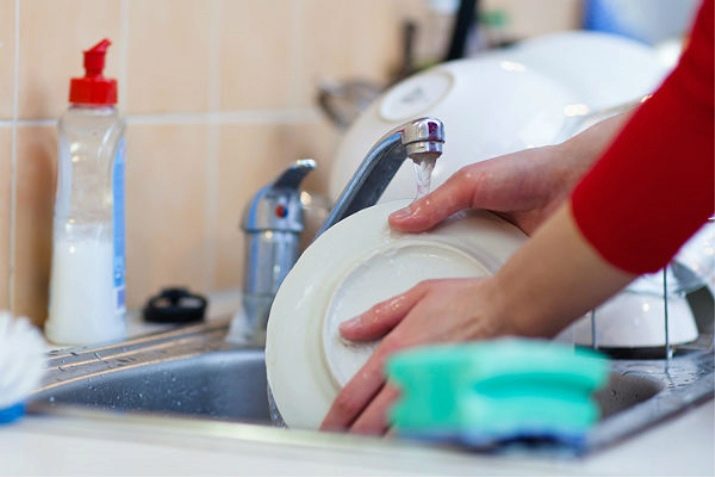
Whatever your sink is made of, it is advisable not only to clean it periodically, but also to take care of it regularly, for this you need:
- Keep it clean on a daily basis and do not leave unwashed dishes overnight.
- When pouring out tea or coffee, immediately rinse the sink thoroughly with clean water.
- Rinse the sink with a regular detergent after every dish wash.
- Be sure to wipe your sink dry after use.
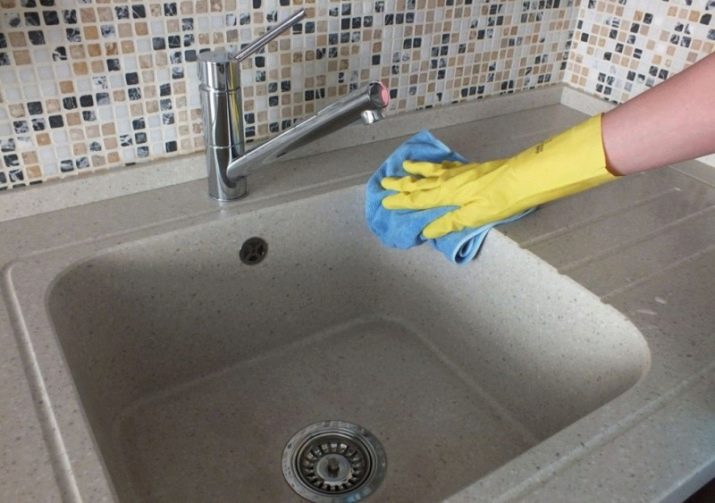
These simple rules will keep the sink clean for a long time and avoid complicated cleaning procedures.








